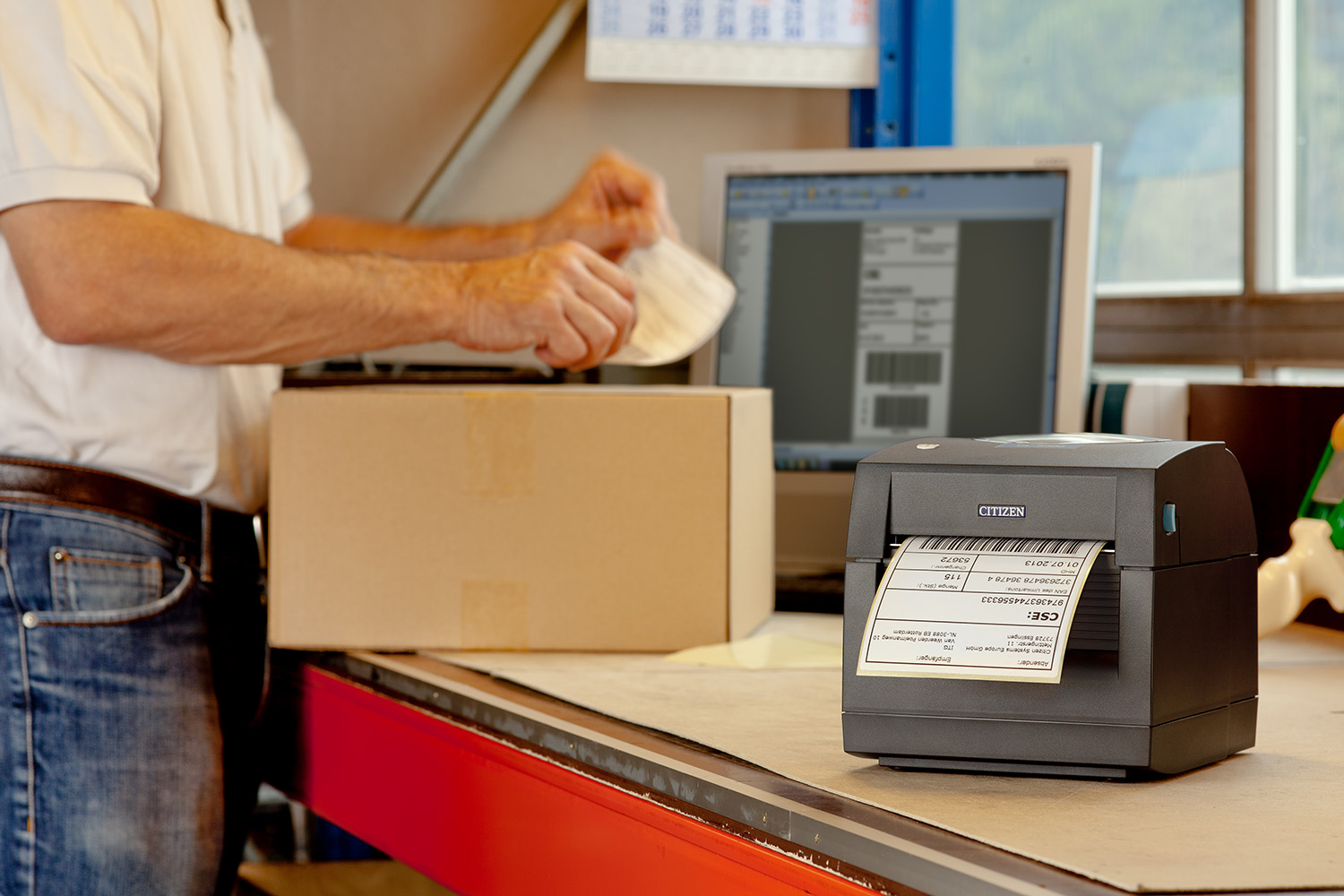Thermal printers can generally print in two different modes: direct thermal and thermal transfer. Whilst both methods are achieved from a thermal printhead applying heat to the media that is being marked, they are both very different and consequently are better at achieving different types of prints. Therefore, before you decide on a thermal printer, you must first decide which printing method would work best for you and your business.
What is direct thermal?
The direct thermal printing method uses heat-sensitive media that blackens when a thermal printhead is passed over it, creating your print. So direct thermal printers have no ink, toner or ribbon, because of this it is considered the “simpler” method of the two.
What is great about direct thermal?
Thanks to their simple design and the fact that they don’t use a ribbon or ink, direct thermal printers are usually pretty easy to use. You don’t need to spend any time changing the ribbons over when they run out – you only have to change the media. This makes them great for businesses like retail stores, cafes and bars that need a printer that gets prints out quickly and easily without any excessive human intervention.
Due to direct thermal printers using only one specific type of media and not needing a ribbon, they generally have a lower running cost than thermal transfer printers and do not require as much maintenance. This is ideal for businesses that want a lower cost of ownership over time, and do not have as much initial budget.
What is not so great about direct thermal?
Direct thermal prints, because they are created by heat on a heat-sensitive material, they can easily fade overtime when exposed to sunlight or heat. So, if you are looking for long-lasting prints that stay legible over a few years, then direct thermal is not going to be the right fit for your business.
You are also limited to what media you can print on with a direct thermal printer because you can only use the compatible heat sensitive media, which generally only comes in a paper format.
What is thermal transfer?
The thermal transfer printing method, unlike direct thermal uses a ribbon and can be used to print on a variety of media. In this method, the thermal printhead applies heat to the ribbon which melts ink onto the media to create your print.
What’s great about thermal transfer?
One of the biggest advantages of thermal transfer printing is that you can use a wider variety of media. This is great for businesses that need to print more specialised labels such as rating plates, license plates and patient wristbands.
Due to the ink being melted on to the media, thermal transfer prints are more durable and have a higher image quality. This makes them ideal for labels, tags and tickets that need to last for a long period of time and carry more detailed information such as laboratory samples, machinery labels and inventory identification tags.
Unlike direct thermal, thermal transfer prints do not fade when exposed to sunlight, making it an ideal printing method for businesses where items are moved around a lot like in warehouse and logistics industries.
What is not so great about thermal transfer?
Because of it’s ribbon mechanism, thermal transfer printers can be more complicated to operate than direct thermal printers. You may have to take some extra time to educate yourself and your staff on how to change over both the ink ribbon and media rolls when they run out. When time is of the essence, this is perhaps not the best printing method as printing can be interrupted for longer periods of time when changing over the consumables.
In addition to this, the running costs of a thermal transfer printing can be higher than a direct thermal printer as you need to purchase more consumables. Over time this can cost a considerable amount, which isn’t ideal for businesses that are looking for a more economic option.
So what’s the best printing method?
As we’ve discussed, it depends on the requirements of your business as to which printing method you should use. However, in summary if you require prints to last no longer than six months on paper media and want lower running costs go for direct thermal – and if you need long-lasting prints that can be printed on a range of different media opt for thermal transfer.

